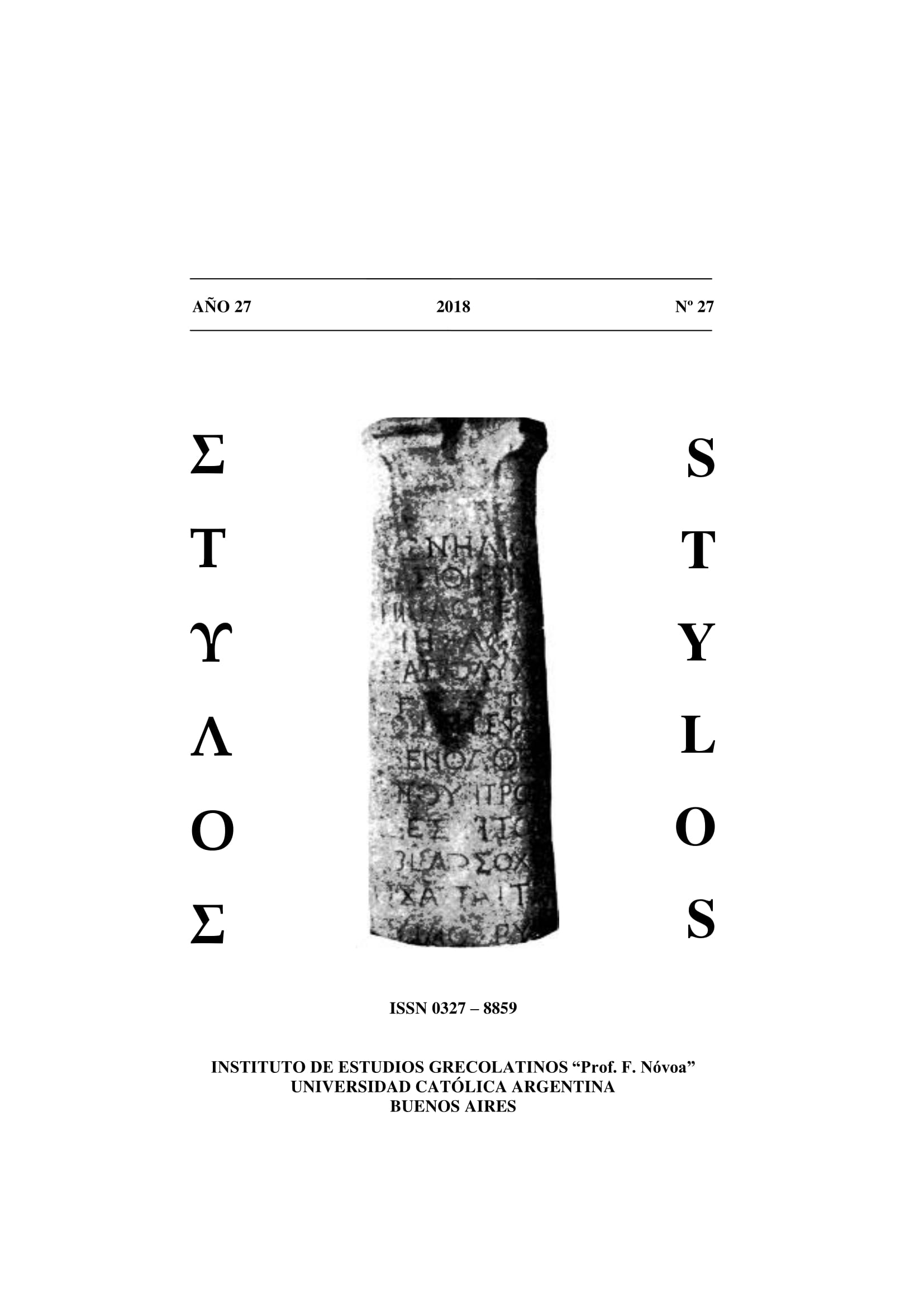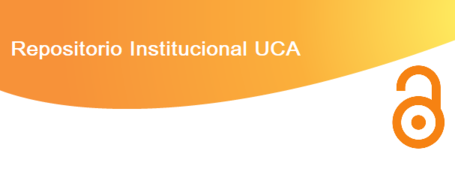QUE DIOS Y MI FAMILIA ME LO DEMANDEN. POSIBLES FUENTES DE LA EJEMPLARIDAD FEMENINA EN IV MACABEOS
Palabras clave:
Expiación – exégesis bíblica – intertextualidad – IV MacabeosResumen
El entramado textual del Libro IV de los Macabeos ha suscitado grandes polémicas debido a la dificultad que conlleva determinar la cantidad y cualidad de influencias que acoge. Muchas tradiciones del ámbito helenístico e incluso romano se dan cita entre sus líneas con el fin de caracterizar moral y éticamente a sus protagonistas. Con esta finalidad, los mártires –que vinculan a esta obra con su fuente, el canónico II Mac. – reunirán dentro de sí una serie de tópicos textuales preexistentes relativos a la expiación y el sacrificio. Intentaremos en consecuencia demostrar de qué manera el personaje de la madre se construye sobre dos pilares literarios igualmente importantes: por un lado la Alcestide euripidea y, por el otro, las hijas de Orión, a quienes menciona Ovidio brevemente en Met. 13.692-699. La unión de ambas fuentes haría converger en ella el aspecto político-familiar y al mismo tiempo religioso que implica su muerte.Descargas
Citas
VON ARNIM, J. (ed.) (1968). Stoicorum Veterum Fragmenta [1905]. Stuttgart.
BOERI, M. (2004). “Observaciones sobre el trasfondo socrático y aris-totélico de la ética estoica”, Ordia Prima 3: 107-146.
BOYER, A. – HAYOUN, M. R. (2008). La historiografía judía [2001]. México D. F.
BURNET, J. (ed.) (1967). Platonis opera [1901]. Oxford.
BYWATER, I. (ed.) (1962). ARISTOTELES Ethica nicomachea [1894]. Oxford.
CAVALLERO, P. A. (ed.) (2007). EURÍPIDES Alceste. Buenos Aires.
CAZZANIGA, I. (ed.) (1962). ANTONINUS LIBERALIS Metamorphoseon synagoge. Milano.
COLLINS, J. J. (2000); Between Athens and Jerusalem. Jewish identity in the Hellenistic Diaspora. Livonia.
DIGGLE, J. (ed.) (1994). Euripidis Fabulae. Oxford.
DOSSEY, L. (2008), “Wife Beating and Manliness in Late Antiquity”. P&P 199: 3-40.
FRENKEL, D. (2008). “Roma y Judea: De la admiración a la enemistad” en BUZÓN, R. et. al. (Eds.). Docenda. Homenaje a Gerardo H. Pagés. Buenos Aires: 315-29.
––––––––– (2011). “El martirio en la Septuaginta: II y IV Macabeos”, AFC 24: 59-91.
GUEVARA DE ÁLVAREZ, M. E. (ed.) (2014). Antología gnómica de la literatura griega. Liricos arcaicos (poetas elegíacos y yambógrafos). Buenos Aires.
HAHNEMAN, G. M. (2002). “The Muratorian Fragments and the Origins of the New Testament Canon” en MC DONALD, L. & SANDERS (EDS.) The Canon Debate. Peabody: 405-15.
HALIVNI, D. (1986). Midrash, Mishna, and Gemara. The Jewish predi-lection for Justified Law. Cambridge.
HARDIE, P. (1990). “Ovid’s Theban history: The first ‘anti-Aeneid’?”, CQ 40/1: 224-235.
HAYS, G. (2014). “The Mythographic Tradition after Ovid” en MILLER, J. & NEWLANDS, C. (eds.). A Handbook to the Reception of Ovid. Chichester: 129-143.
VAN HENTEN, J. W. (1995). “Judith as Alternative Leader: A rereading of Judith 7-13” en BRENNER, A. (ed.). A Feminist Companion to Esther, Judith and Susanna. Sheffield: 224-252.
–––––––––––––– (1997). The Maccabean martyrs as Saviours of the Jewish People. A study of 2 and 4 Maccabees. JSJSup 57, Leiden: Brill.
LESKY, A. (1989). Historia de la literatura griega. Madrid.
MAGNUS, H. (ed.) (1914). P. OVIDII NASONIS Metamorphoseon libri XV. Berlin.
MOORE, S. D. – ANDERSON, J. C. (1998). “Taking it like a man: Mas-culinity in 4 Maccabees”. JBL 126/1: 99-127.
PARKER, R. (1996). Miasma. Pollution and purification in Early Greek Religion. Oxford.
PATERSON CORRINGTON, G. (1989). “The Milk of Salvation: Redemption by the Mother in Late Antiquity and Early Christianity”, HThR 82/4: 393-420.
PIÑERO, A. (2007). Literatura judía de época helenística en lengua griega. Madrid.
RAHLFS, A. (ed.) (1971). Septuaginta, id est Vetus Testamentum graecae iuxta LXX interpretes Vol. 1-2 [1935]. Stuttgart.
RENEHAN, R. (1972). “The greek philosophic background of Fourth Maccabees”, RhM 115/3: 223-38.
SAYAR, R. J. (2014). “Te voy a poner como una luz para el mundo (Is. 49.6.4). La figura de Eleazar como ejemplo y paradigma del éthnos hebreo en IV Macabeos”, AFC 27.2: 99-114.
––––––––– (2015). “‘No es imitación de hombres […] sino de la exis-tencia’ (Poet. 1450a16). ¿Dispositivos teatrales en IV Macabeos?” Ponencia leída en el marco del VII Congreso Argentino e Internacional de Teatro Comparado. FHyA–UNR. 12, 13 y 14 de agosto de 2015.
––––––––– (2017). “Si no puedes vencer a tu enemigo... búrlate de él. ¿Elementos de comedia en la constitución de IV Macabeos?” Ponencia leída en el marco de las II Jornadas sobre Comedia y Sociedad en la Antigüedad (JOCOSA II). FFyL–UBA. 27 y 28 de abril de 2017.
TOLA, E. (2007). Ovidio. Metamorfosis. Una introducción crítica. Buenos Aires.
WEIGOLD, M. (2007). The Deluge and the Flood of Emotions: The Use of Flood Imagery in 4 Maccabees in its Ancient Jewish Context. En: XERAVITZ, G. - J. ZSENGELLÉR, The Books of the Maccabees: History, Theology, Ideology. Leiden: 197-210.
WEST, M. L. (ed.) (1972). Iambi et elegi Graeci Vol. 2. Oxford.
WHITE, H. (2003). El texto histórico como artefacto literario y otros escritos. Barcelona.
Descargas
Publicado
Cómo citar
Número
Sección
Licencia






